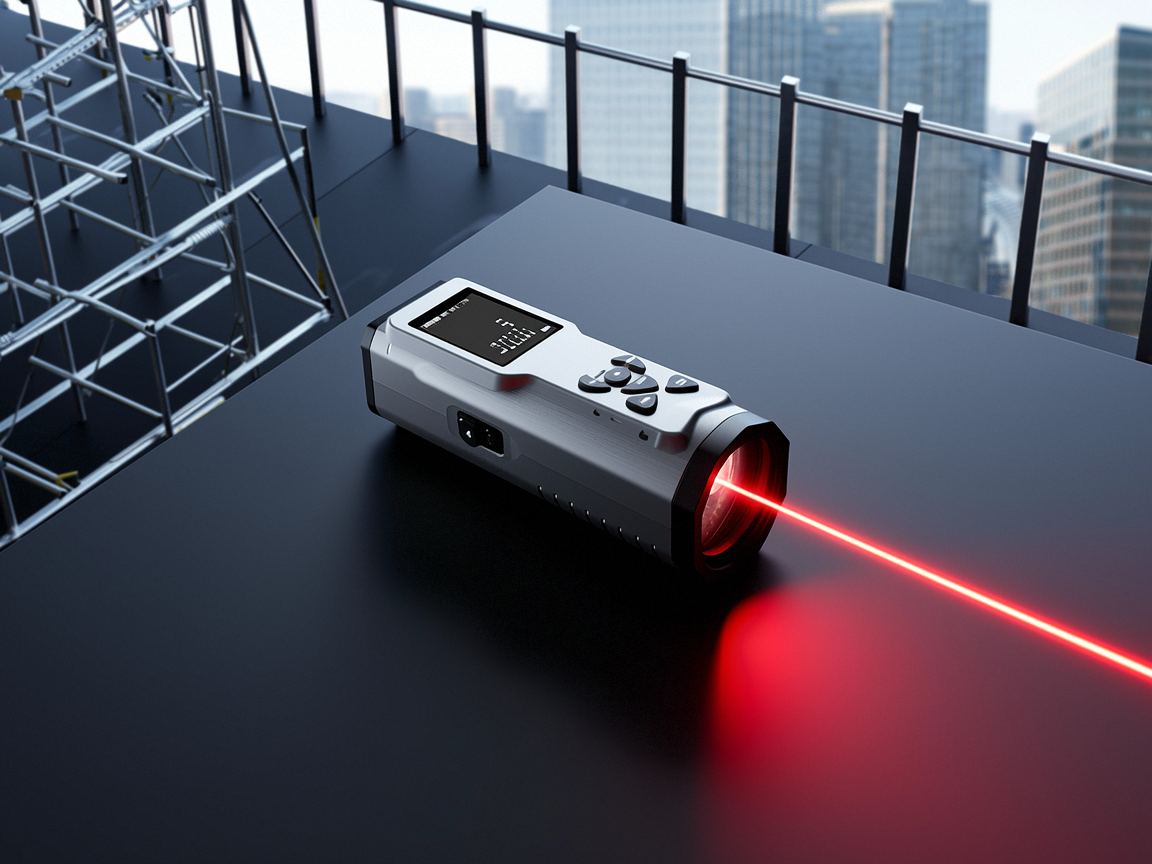Laser rangefinder and laser displacement sensor are both devices based on laser technology for measurement, but their application scenarios, working principles, and measurement objects are different. Understanding the differences between the two can help us better choose suitable sensors to meet different measurement needs.

laser range finderIt is a device used to measure the distance between an object and a sensor. It measures distance by emitting a laser beam and calculating the time difference for the laser to reflect back from the target object. The main applications include:
Architecture and ConstructionUsed to measure the height, length, area, etc. of buildings. Laser rangefinders can perform precise measurements over long distances, eliminating the hassle of traditional measurement methods.
industrial measurementIn the production line, laser rangefinders can help detect the position, size, and spacing of objects, ensuring the accuracy of the production process.
Automation and RoboticsIn the field of automation, laser rangefinders can be used for robot navigation, obstacle avoidance systems, positioning systems, etc.
InstrumentIn daily life, such as home decoration and outdoor exploration, laser rangefinders are also commonly used to measure the area or distance of rooms.
Laser displacement sensorFocus on measuring the surface of the object relative to the sensorDisplacement variationIt is usually used to detect small displacements or deformations of objects in a certain direction. Unlike laser rangefinders, displacement sensors focus more on precise displacement measurement. The main applications include:
Industrial Automation and Quality ControlLaser displacement sensors are commonly used in precision machining, assembly lines, and other fields to monitor the displacement or deformation of mechanical components, ensuring the accuracy of equipment operation and product quality.
Surface morphology detection of objectsIn industries such as semiconductor manufacturing and metal processing, laser displacement sensors can be used to detect small defects, dents, roughness, etc. on the surface of objects.
monitoringUsed to measure small displacements or vibrations generated by machines, tools, or components during operation, widely used in vibration testing, mechanical testing, and material testing.
Traffic monitoringUsed for detecting deformation, displacement, etc. of transportation vehicles or bridges, especially in real-time monitoring of transportation facilities such as highways and railways.
| characteristic | laser range finder | Laser displacement sensor |
|---|---|---|
| major function | Measure the distance between an object and a sensor | Measure the displacement or deformation of an object's surface |
| application area | Measure large distances, such as buildings, engineering, automation, etc | Precision measurement of object surface shape, quality control, dynamic monitoring, etc |
| Accuracy requirements | High precision is required for large-scale distance measurement | High precision is required for small displacements or deformations |
| Working principle | Calculate distance based on time difference or triangulation | Using laser reflection and detecting displacement changes through changes in spot position |
laser range finderMainly used for measuring large-scale distances, suitable for applications such as construction, automation, and robotics, with a focus on the distance between targets and sensors.
Laser displacement sensorFocusing on high-precision and small displacement measurement, it is widely used in industrial automation, precision machining, quality inspection and other fields, especially adept at measuring small deformations or displacements on the surface of objects.
By understanding both, suitable laser measurement equipment can be selected according to application requirements.






Contact us feel free to call or write anytime, We will call you back soon!